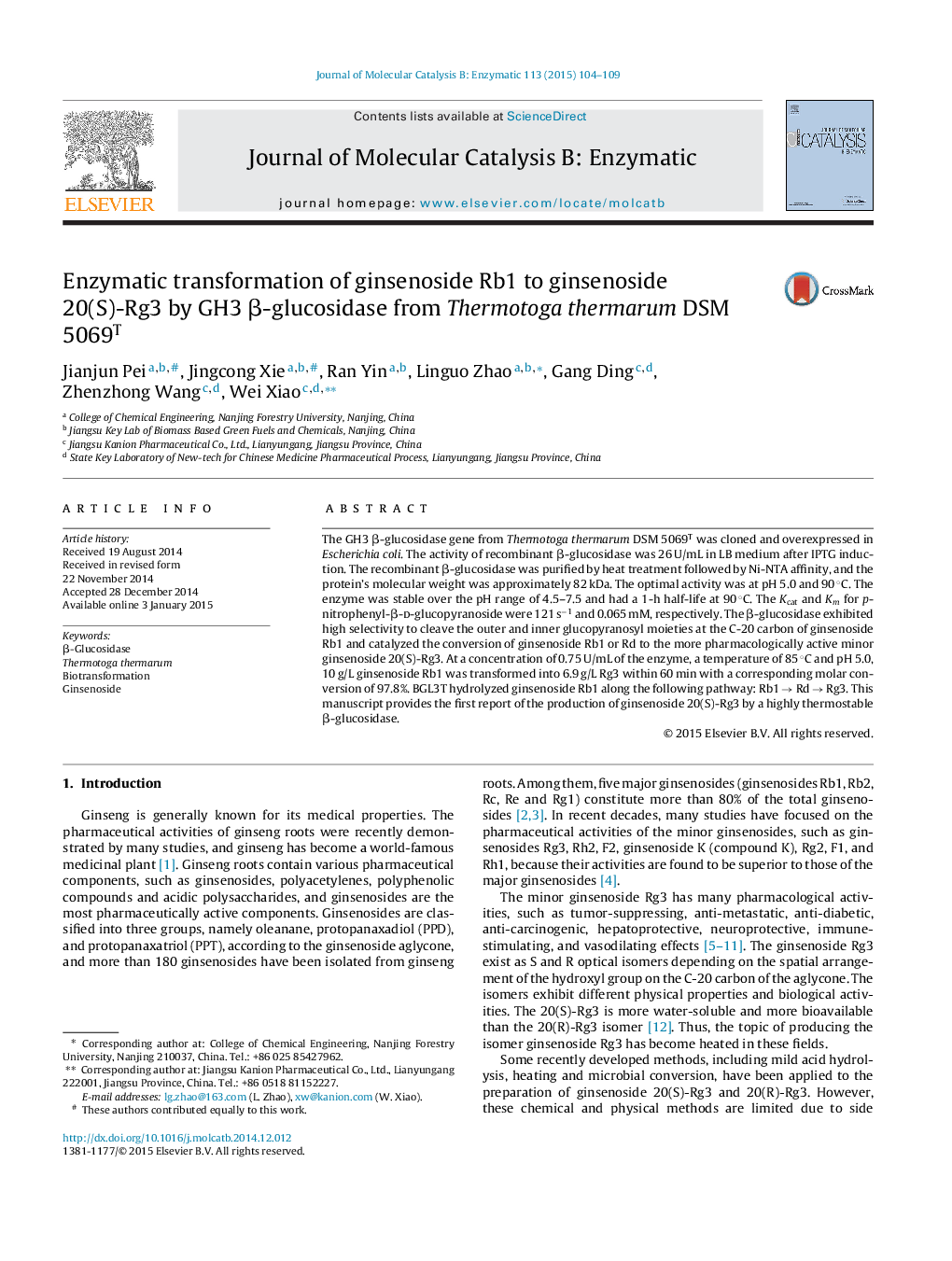| Article ID | Journal | Published Year | Pages | File Type |
|---|---|---|---|---|
| 69415 | Journal of Molecular Catalysis B: Enzymatic | 2015 | 6 Pages |
•A glucosidase gene (bgl3t) from Thermotoga thermarum DSM 5069T was overexpressed in Escherichia coli.•BGL3T exhibited thermostability.•BGL3T biotransformed ginsenoside Rb1 to 20(S)-Rg3 with 97.8% yield.
The GH3 β-glucosidase gene from Thermotoga thermarum DSM 5069T was cloned and overexpressed in Escherichia coli. The activity of recombinant β-glucosidase was 26 U/mL in LB medium after IPTG induction. The recombinant β-glucosidase was purified by heat treatment followed by Ni-NTA affinity, and the protein's molecular weight was approximately 82 kDa. The optimal activity was at pH 5.0 and 90 °C. The enzyme was stable over the pH range of 4.5–7.5 and had a 1-h half-life at 90 °C. The Kcat and Km for p-nitrophenyl-β-d-glucopyranoside were 121 s−1 and 0.065 mM, respectively. The β-glucosidase exhibited high selectivity to cleave the outer and inner glucopyranosyl moieties at the C-20 carbon of ginsenoside Rb1 and catalyzed the conversion of ginsenoside Rb1 or Rd to the more pharmacologically active minor ginsenoside 20(S)-Rg3. At a concentration of 0.75 U/mL of the enzyme, a temperature of 85 °C and pH 5.0, 10 g/L ginsenoside Rb1 was transformed into 6.9 g/L Rg3 within 60 min with a corresponding molar conversion of 97.8%. BGL3T hydrolyzed ginsenoside Rb1 along the following pathway: Rb1 → Rd → Rg3. This manuscript provides the first report of the production of ginsenoside 20(S)-Rg3 by a highly thermostable β-glucosidase.
Graphical abstractFigure optionsDownload full-size imageDownload as PowerPoint slide
